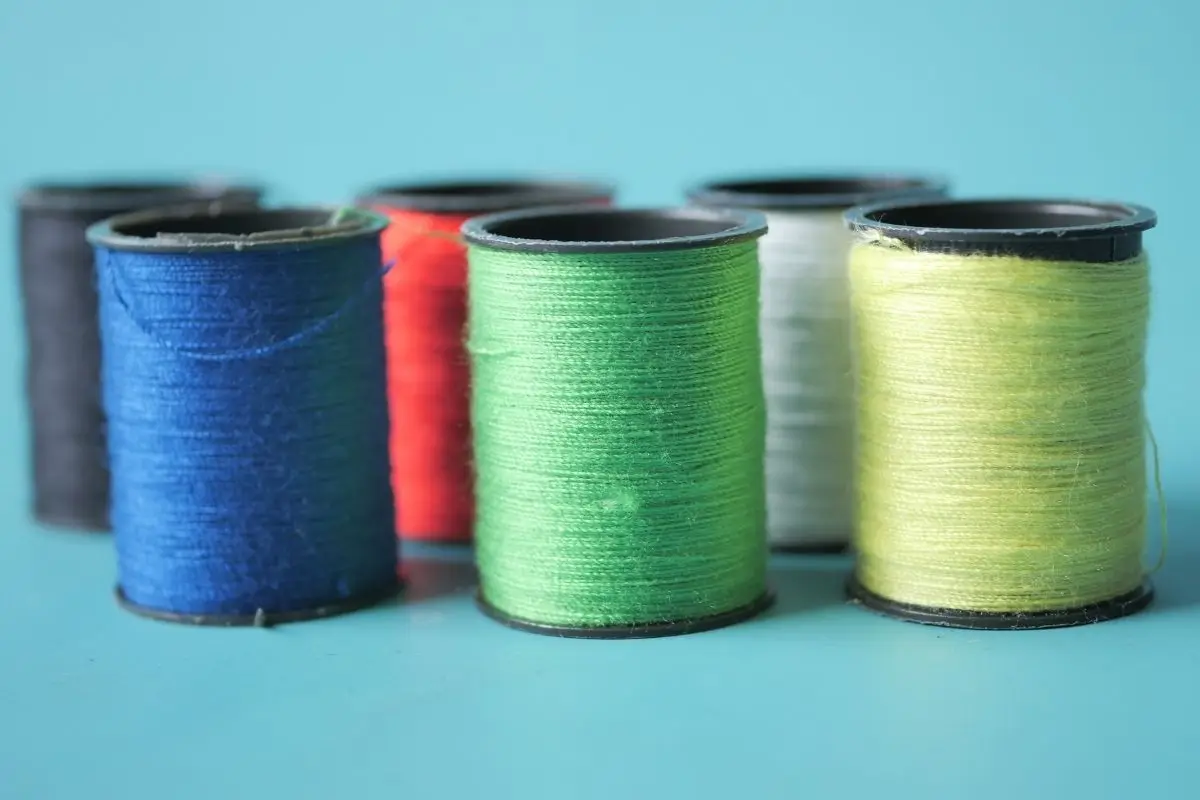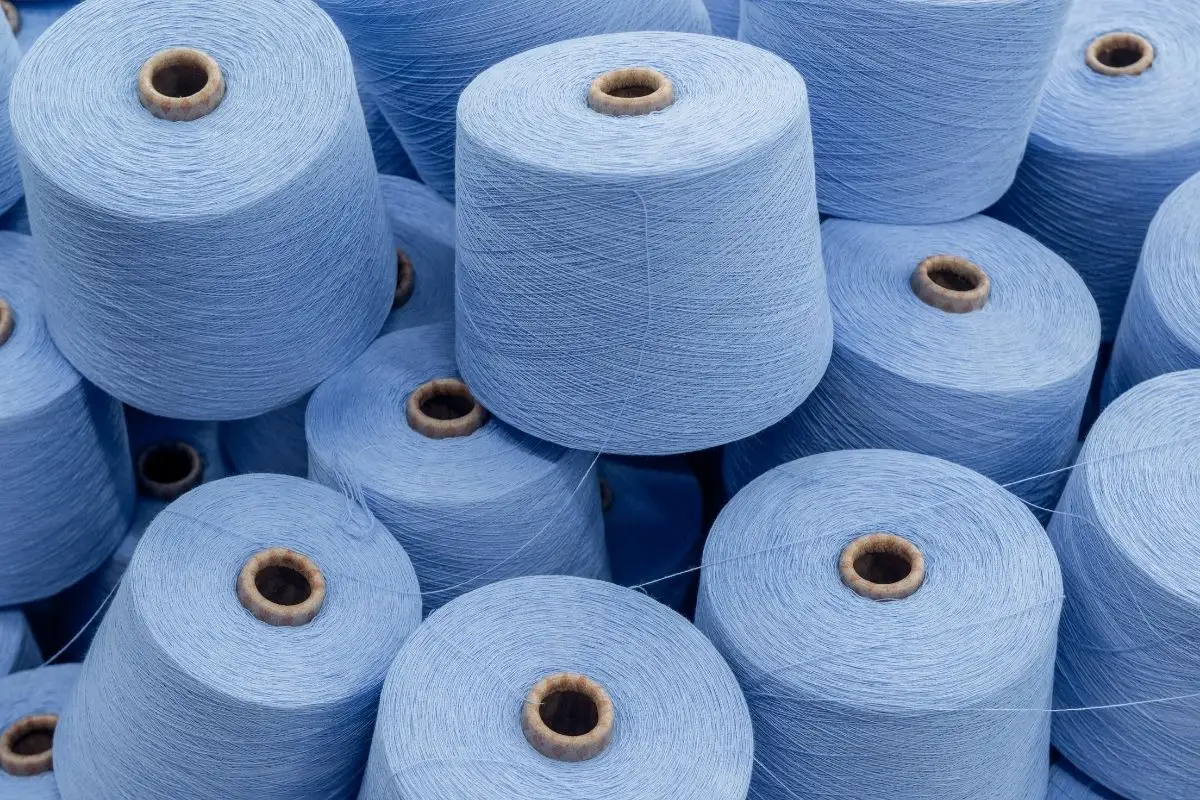Types of Yarn is a question that matters greatly in the textile industry, as yarn determines a fabric’s texture, durability, and appearance. Understanding yarn types helps both producers and users make better material choices.
Today, yarns are divided into three main categories: natural, synthetic, and blended. Natural yarns come from plant or animal sources, while synthetic ones are made through chemical processes. Each yarn type serves different applications such as sewing, knitting, weaving, or industrial production.
Table of Contents
- Natural Yarn Types
- Synthetic Yarn Types
- Blended (Mix) Yarns
- Yarn Production Methods
- Best Yarns for Sewing and Knitting
- Factors Affecting Yarn Quality
- Comparison of Yarn Types
- Tips for Choosing the Right Yarn
- Sustainable and Eco-Friendly Yarns
- Summary
- FAQ (Frequently Asked Questions)
Natural Yarn Types
Natural yarns are produced from raw materials found in nature. They are eco-friendly and breathable, making them a timeless choice in textiles. Based on their source, they are divided into plant-based and animal-based yarns.
Plant-Based Yarns
- Cotton: Soft and highly absorbent, ideal for summer wear.
- Linen: Strong, cool to the touch, often used in tablecloths and home décor.
- Jute: Coarse and sturdy, used in sacks, ropes, and rustic crafts.
Animal-Based Yarns
- Wool: From sheep or goats; provides excellent insulation.
- Silk: The shiniest natural yarn, used in luxury fabrics.
- Cashmere: Fine, soft fibers from goats; very lightweight.
Synthetic Yarn Types
Synthetic yarns are made through chemical processes and stand out for their strength, elasticity, and resistance to moisture.
Common Synthetic Yarns
- Polyester: Durable, wrinkle-resistant, and machine-washable.
- Nylon: Extremely elastic; used in sportswear and hosiery.
- Acrylic: Resembles wool but causes fewer allergies.
- Elastane (Spandex): Perfect for stretchable garments like leggings and swimsuits.
| Yarn Type | Key Feature | Common Uses |
|---|---|---|
| Polyester | Durable, quick-dry | Apparel, curtains, upholstery |
| Nylon | Elastic, strong | Activewear, socks |
| Acrylic | Lightweight, wool-like | Sweaters, blankets |
| Elastane | High stretch | Sportswear, underwear |
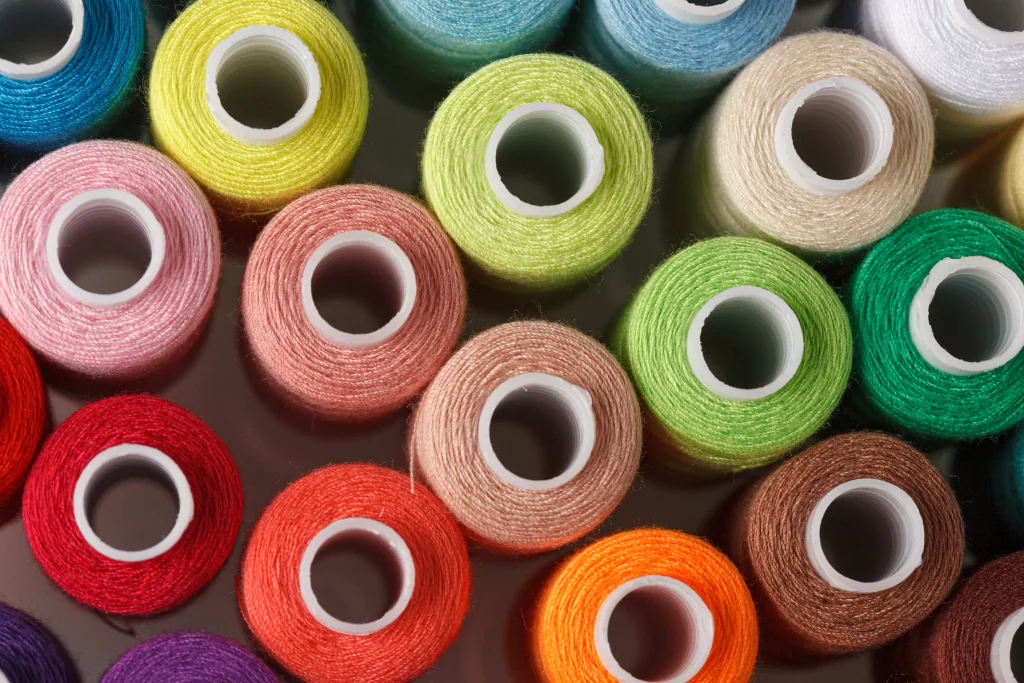
Blended (Mix) Yarns
Blended yarns are made by combining two or more different fibers in specific ratios to merge their advantages. This approach balances comfort, strength, and aesthetics.
Popular Blends
- Cotton-Polyester Blend: Combines natural comfort with durability; common in shirts and home textiles.
- Wool-Acrylic Blend: Keeps warmth while remaining lightweight.
- Viscose-Polyester Blend: Offers luster and easy maintenance.
| Blend Ratio | Characteristic | Application |
|---|---|---|
| 50% Cotton – 50% Polyester | Wrinkle-resistant | Everyday wear |
| 70% Wool – 30% Acrylic | Warm yet light | Winter textiles |
| 40% Viscose – 60% Polyester | Shiny, durable | Office clothing |
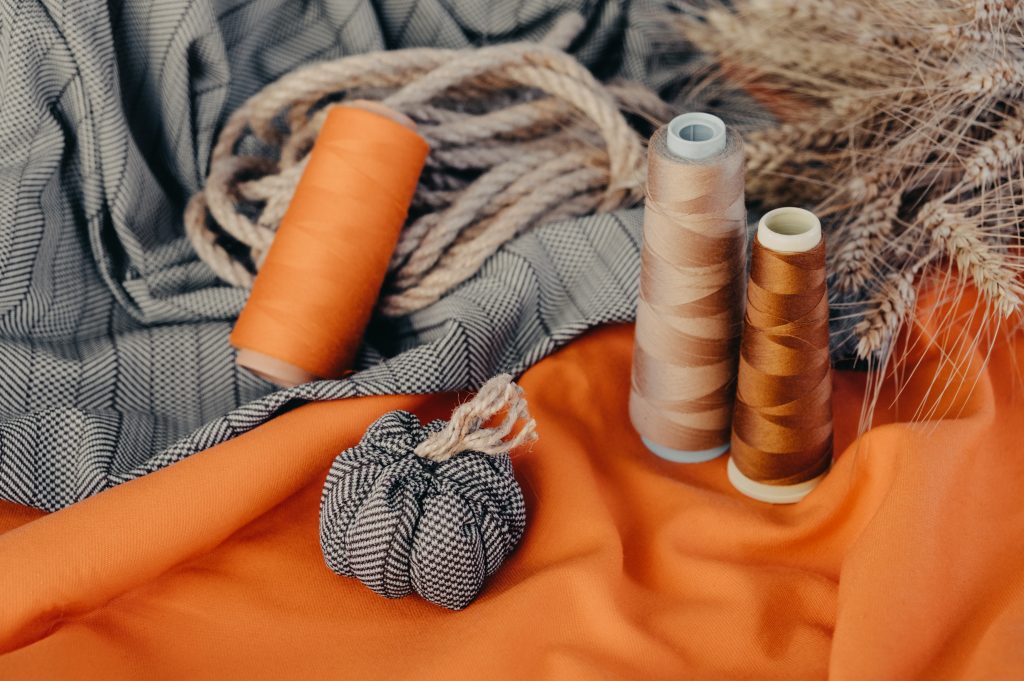
Yarn Production Methods
Yarn production involves twisting and stretching fibers under controlled tension. The chosen technique directly affects the yarn’s strength and surface finish.
Major Spinning Methods
- Ring Spinning: Classic technique producing strong, smooth yarns.
- Open-End (Rotor) Spinning: Fast and cost-efficient.
- Air-Jet Spinning: Uses air pressure for smooth and shiny yarns.
- Compact Spinning: Minimizes fiber ends for higher strength.
| Method | Advantage | Drawback |
|---|---|---|
| Ring | High quality, durable | Slow production |
| Rotor | High speed | Lower strength |
| Air-Jet | Smooth surface | Complex machinery |
| Compact | Low fuzz, strong | Higher cost |

Best Yarns for Sewing and Knitting
Each textile process requires specific yarn properties. For sewing, the yarn must resist tension; for knitting, it should be flexible and soft.
Sewing Yarns
- Polyester Thread: Strong and friction-resistant.
- Cotton Thread: Breathable; perfect for natural fabrics.
- Nylon Thread: Elastic; used for leather or sports garments.
Knitting Yarns
- Acrylic: Common in sweaters and scarves.
- Wool: Provides warmth and insulation.
- Cotton: Soft and breathable, ideal for summer knits.
| Application | Suitable Yarn | Main Property |
|---|---|---|
| Sewing | Polyester, Nylon | Strength, flexibility |
| Knitting | Cotton, Wool, Acrylic | Softness, air flow |

Factors Affecting Yarn Quality
Yarn quality depends on both raw material and production precision. A good yarn is smooth, evenly twisted, and durable.
Key Quality Factors
- Fiber Length: Longer fibers produce smoother yarn.
- Twist Count: More twists add strength; fewer twists give softness.
- Moisture Content: Affects elasticity and break resistance.
- Cleanliness: Impurities reduce quality.
| Factor | High Quality Effect | Low Quality Result |
|---|---|---|
| Fiber Length | Smooth texture | Easy breakage |
| Twist Count | Strength | Loose structure |
| Moisture | Elasticity | Brittleness |
| Cleanliness | Uniform texture | Irregular yarn |
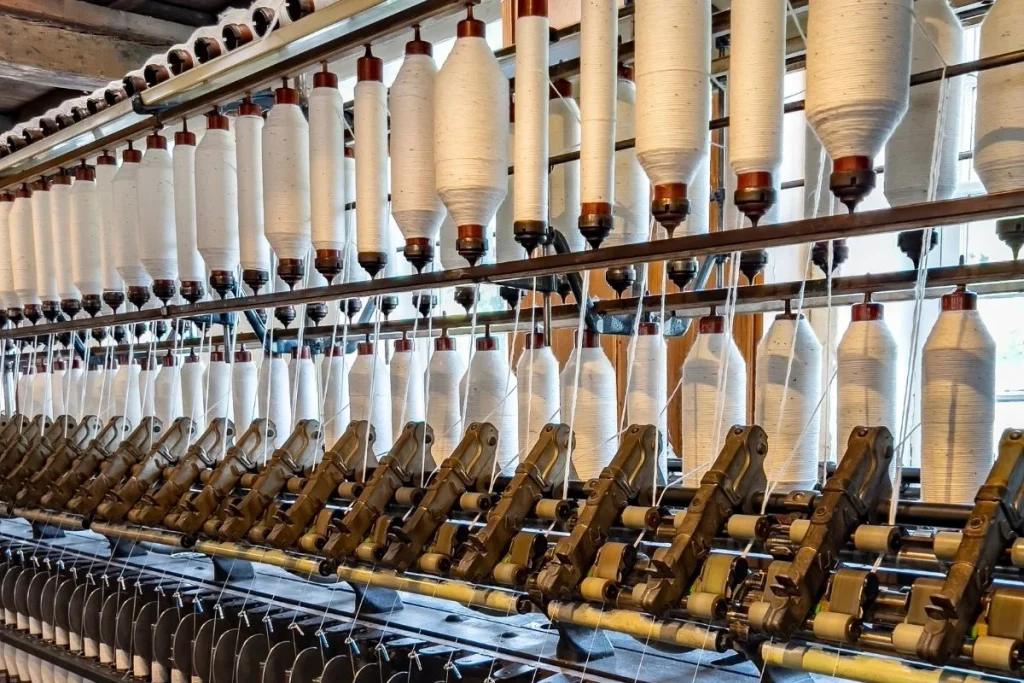
Comparison of Yarn Types
The following table provides a general comparison of the characteristics of natural, synthetic, and blended yarns. This table helps users choose the right yarn according to their specific needs.
| Property | Natural Yarn | Synthetic Yarn | Blended Yarn |
|---|---|---|---|
| Raw Material | Plant / Animal | Chemical | Mixed |
| Breathability | High | Low | Medium |
| Strength | Medium | High | Balanced |
| Elasticity | Low | Medium / High | Adjustable |
| Softness | High | Medium | Medium-High |
| Color Fastness | Moderate | High | High |
| Environmental Impact | Low | High | Moderate |
Through this table, you can clearly see which type of yarn is most suitable for each area of application.
Tips for Choosing the Right Yarn
The right yarn choice directly affects production efficiency and final product quality.
What to Consider
- Purpose: Define if it’s for sewing, knitting, or industrial use.
- Fabric Type: Use natural yarns for cotton fabrics; synthetic for polyester fabrics.
- Machine Compatibility: Match yarn strength to needle type and speed.
- Color Fastness: Test to ensure color stability.
Practical Advice
- Choose low-twist yarns for thin fabrics.
- Opt for natural fibers for sensitive skin.
- Use spandex-blended yarns for stretchable garments.

Sustainable and Eco-Friendly Yarns
The textile industry is increasingly adopting sustainable yarns to reduce environmental impact.
Eco-Friendly Yarn Types
- Organic Cotton: Grown without pesticides or chemical fertilizers.
- Recycled Polyester: Made from used plastic bottles.
- Bamboo Yarn: Naturally antibacterial and biodegradable.
- Tencel (Lyocell): Produced from wood pulp in a closed-loop system.
| Yarn Type | Feature | Environmental Benefit |
|---|---|---|
| Organic Cotton | Natural softness | Soil-friendly |
| Recycled Polyester | Reused materials | Waste reduction |
| Bamboo | Antibacterial | Biodegradable |
| Tencel | Absorbent | Low water use |
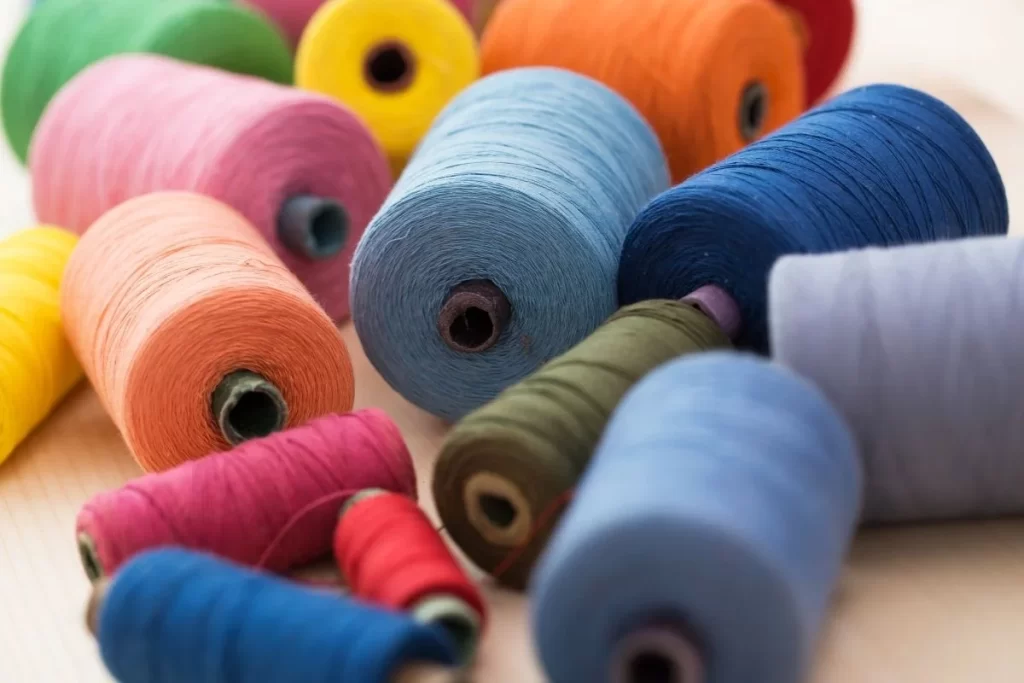
Summary
In this comprehensive guide on Types of Yarn, we explored natural, synthetic, and blended yarns, along with their uses, strengths, and production methods.
We also examined quality factors, selection tips, and sustainable alternatives.
Knowing the right yarn type enhances both product quality and environmental responsibility — an essential skill for every designer, crafter, or textile professional.
FAQ (Frequently Asked Questions)
Yarns are classified as natural, synthetic, or blended, each with unique properties and applications.
Synthetic yarns like polyester and nylon offer the highest strength and resistance.
Yes. They are biodegradable and environmentally safe when minimally processed.
Blends combine the advantages of different fibers, improving comfort and strength.
Look for smooth, evenly twisted yarns that resist breakage.
The ring spinning method remains the most widely used for high-quality yarns.
Wool, acrylic, and cotton yarns provide softness, flexibility, and warmth.
Organic cotton, bamboo, recycled polyester, and Tencel are eco-friendly options.
Yes. Sewing threads are tightly twisted and strong, while knitting yarns are softer and stretchier.
Natural fibers like organic cotton and bamboo are best for sensitive skin.
Need guidance choosing the perfect yarn?
Contact our textile experts for tailored advice and find the most suitable yarn for your next project.



